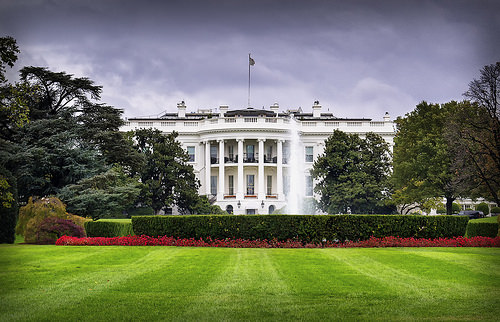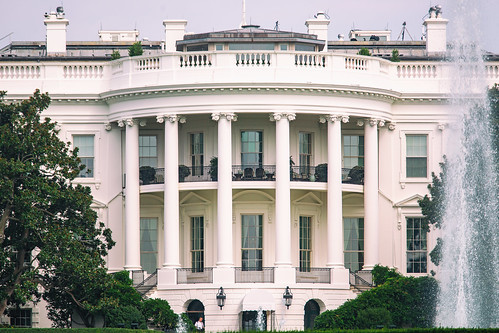On May 2, 2023, the Environmental Protection Agency (EPA) published its “Draft National Strategy to Prevent Plastic Pollution,” and issued a formal request for public comments. EPA notes that over the last 20 years, the global annual production of plastic products has more than doubled, and that roughly 23% of global plastic waste is improperly disposed, burned, or leaked into the environment. North America both produces and consumes roughly 19% of global plastics. To address these issues, the Draft Strategy identifies a set of voluntary actions intended to reduce the volumes of plastic wastes the end up disposed or discarded within the US. EPA describes these measures, and the agency’s related activities, as “endeavors to provide an innovative, equitable approach to reduce and recover plastic and other waste, as well as prevent plastic pollution from harming human health and the environment, particularly for communities already overburdened by pollution.” The remainder of this note summarizes the 48 pages of the Draft Strategy.
Read MoreAudit, Compliance and Risk Blog
Jon Elliott
Recent Posts
EPA publishes Draft National Strategy to Prevent Plastic Pollution
Posted by Jon Elliott on Mon, May 08, 2023
Tags: EPA, pollutants, plastics
The Occupational Safety and Health Administration (OSHA) “Medical Services and First Aid Standard” requires employers to provide their employees with ready access to medical attention, including treatment and consultation, in the event of an occupational injury or illness. (29 CFR 1910.151). These services can be made available onsite, or at medical facilities in “near proximity” for use by injured employees. This Standard has not been revised since OSHA adopted it in 1998, but the agency has updated and expanded compliance guidance in the intervening 25 years; this includes OSHA’s “Best Practices Guide: Fundamentals of a Workplace First-Aid Program” (2006). The rest of this note discusses these requirements.
Read MoreTags: OSHA, Safety and Health at Work
Corporate Sustainability Reporting Directive requirements are coming
Posted by Jon Elliott on Fri, Apr 28, 2023
Beginning in 2024, the European Union’s (EU’s) Corporate Sustainability Reporting Directive (CSRD) will expand EU rules for corporate reporting of social and environmental information. The CSRD was adopted in November 2022 and took effect in January 2023. It provides new reporting requirements that will be phased in during 2025-2029, superseding the existing EU Non-Financial Reporting Directive (NFRD; which I discussed HERE). It also lowers the threshold for reporting to reach large numbers of somewhat smaller companies. The EU estimates the new rules will apply to approximately50,000 companies (up from 11,700), mostly EU-based but also including non-European companies with sufficient sales in the EU and/or with sufficiently significant EU-based subsidiaries. The Wall Street Journal has estimated that 10,000 additional non-EU companies will also be covered. The remainder of this note summarizes these new requirements, which are still being refined by the EU-sponsored EFRAG organization.
Read MoreTags: European Union, CSRD, EU, EFRAG
European Union Non-Financial Reporting Directive requirements
Posted by Jon Elliott on Tue, Apr 25, 2023
Beginning in 2018 with reporting of 2017 data, the European Union’s (EU’s) Non-Financial Reporting Directive (NFRD) requires targeted companies to provide information to help shareholders and other interests to understand risks faced by the company, and to summarize the company’s activities regarding a variety of social and environmental issues. These requirements will be superseded during 2025-2029 by a new Corporate Sustainability Reporting Directive (CSRD) that clarifies and expands NFRD requirements. The remainder of this note summarizes existing NFRD requirements.
Read MoreTags: European Union, NFRD, CSRD, EU
Biden Administration again requests significant OSHA budget increases
Posted by Jon Elliott on Wed, Apr 12, 2023
On March 9, the Biden Administration issued its budget proposal for federal Fiscal Year (FY) 2024 (October 1, 2023 through September 30, 2024). The administration proposes a $738.7 million budget for the Occupational Safety and Health Administration (OSHA), a 17% ($106.3 million) increase above OSHA’s adopted 2023 budget of $632.4 million (the Administration had proposed $701 million), and adopted 2022 budget of $610 million (the Administration had proposed $665 million). Congress is likely to cut the President’s proposals once again, but it’s still worth reviewing the Administration’s ongoing priorities, so I will summarize the latest proposal in the rest of this note.
Recent enforcement actions provide reminders that young workers are subject to special legal protections – special requirements apply to workers 14-24 and prohibit most employment of even younger people. As an example of these actions, on March 21 the Occupational Safety and Health Administration (OSHA) issued citations against a Pennsylvania contractor after a 17 year old employee fell off a roof (his employment violated “hazardous occupations” prohibitions). As another example, in November 2022 the Department of Labor’s (DOL’s) Wage and Hour Division (WHD) filed for a nationwide injunction against the nation’s largest food sanitation company (Packers Sanitation Services) after finding 31 children ages 13-17 in “hazardous occupations” including cleaning dangerous powered equipment during overnight shifts.
Read More
Tags: OSHA, DOL, WHD, Young workers
Biden Administration again requests significant EPA budget increases
Posted by Jon Elliott on Mon, Mar 27, 2023
On March 9, the Biden Administration issued its budget proposal for federal Fiscal Year (FY) 2024 (October 1, 2023 through September 30, 2024). The administration proposes a $11.08 billion budget for the Environmental Protection Agency (EPA), a 19% ($1.9 billion) increase above EPA’s adopted 2023 budget of $10.1 billion – similar to the administration’s proposals for FY 2023 ($11.9 billion; I wrote about it HERE), and FY 2022 proposal ($11.2 billion; I wrote about it HERE). In both years Congress cut the President’s proposals considerably, and it’s likely to do so again. However, it’s worth reviewing the Administration’s ongoing environmental priorities, so I will summarize the latest proposal in the rest of this note.
Read MoreWashington conducts first sales under its new state greenhouse gas cap-and-invest program
Posted by Jon Elliott on Mon, Mar 20, 2023
The Washington state Department of Ecology (Ecology) has just conducted its first auction of greenhouse gas (GHG) emission allowances, under the state’s Climate Commitment Act (or CCA) which establishes a comprehensive, market-based program to reduce carbon pollution and achieve greenhouse gas limits set in state law. The CCA was one of a package of climate-related laws passed in 2021, including the Clean Fuel Standard, and an expanded hydrofluorocarbons management program. The remainder of this note discusses CCA and the recent sale of GHG allowances.
Read MoreTags: Greenhouse Gas, ghg, greenhouse, CO2 Emissions, Washington, CCA
OSHA considering changes to Voluntary Prevention Programs
Posted by Jon Elliott on Mon, Mar 13, 2023
Since 1982, the Occupational Safety and Health Administration (OSHA) has administered “Voluntary Protection Programs” (VPPs) to encourage employers to establish and implement worker Safety and Health Programs that exceed minimal efforts to comply with applicable OSHA standards. OSHA designs VPP eligibility to encourage employer/employee/OSHA cooperation, and to reward such cooperation by granting employers increased flexibility and reduced likelihood of inspection. OSHA presently oversees three programs (which I described in more detail HERE), and is undertaking a “VPP Modernization” initiative to evaluate ways for “modernizing, improving, and expanding” these efforts. On February 16 OSHA posted questions about possible changes, which I discuss in the rest of this note.
Read MoreTags: Health & Safety, OSHA, Safety and Health at Work, Employment, VPP
OSHA applies General Duty Clause to protect warehouse employees
Posted by Jon Elliott on Mon, Mar 06, 2023
On February 1, the Occupational Safety and Health Administration (OSHA) issued citations to Amazon company warehouses in three states, continuing investigations into the company’s practices in other states. OSHA is asserting that the company is violating the Employer’s General Duty Clause by failing to protect warehouse workers from low back injuries and other musculoskeletal disorders. Although California enforces specific ergonomics requirements (which I’ve written about HERE), OSHA and other states instead regulate ergonomics violations by targeted industries through their General Duty Clauses. The remainder of this note discusses these recent OSHA efforts to protect warehouse workers.
Read MoreTags: OSHA, Employee Rights, Protecting employees, Employment, Labour & Employment, Amazon










